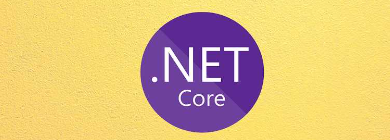 TIL Creatives
TIL CreativesET Year-end Special Reads
Who is eligible to apply for Direct Tax Vivad Se Vishwas 2024 Scheme?
According to an income tax department circular dated October 15, 2024, the following taxpayers are eligible:● A person in whose case an appeal or a writ petition (WP) or special leave petition (SLP) has been filed either by him or by the income tax authority or by both, before an appellate forum and such appeal or petition is pending as on July 22, 2024
● A person who has filed his objections before the Dispute Resolution Panel (DRP) under section 144C of the Income Tax Act, and the DRP has not issued any direction on or before July 22, 2024
● A person in whose case the DRP has issued direction under section 144C(5) and the Assessing Officer (AO) has not completed the assessment under section 144C(13) on or before July 22, 2024
● A person who has filed an application for revision under section 264 of the Act and such application is pending as on July 22, 2024.
How Direct Tax Vivad Se Vishwas Scheme, 2024 works
Chartered accountant Mihir Tanna explains how Vivad Se Vishwas Scheme works. “Suppose you have a pending dispute where the tax department determines your income is Rs 150 and tax liability is Rs 25. However, as per the taxpayer, the income is Rs 100, and the tax liability is Rs 10. So, if you want to settle this income tax dispute under this scheme, then you need to pay Rs 15 (Rs 25-Rs 10) and a specified percentage on this disputed tax amount. The penalty and penal interest under section 220 will get waived off if the taxpayer’s application is approved under the Direct Tax Vivad Se Vishwas Scheme 2024.”Also read: Vivad Se Vishawas Scheme 2024: Income Tax Department releases new FAQs on eligibility, tax amount payable; Check details here
Apply for Vivad Se Vishwas Scheme before December 31, 2024, to pay lower tax amount
The Vivad Se Vishwas Scheme allows taxpayers to pay a lower tax amount provided the amount is deposited and Form 1 is submitted to the income tax department on or before December 31, 2024. However, if the tax amount is deposited and Form 1 is submitted on or after January 1, 2025, then the taxpayer will need to pay the higher amount.Tanna says: “Taxpayers (new appellant) filing Form 1 to apply for Direct Tax Vivad Se Vishwas Scheme 2024 need to pay 110% of the disputed tax amount from January 1, 2025. However, if applying on or before December 31, 2024, then taxpayers (new appellant) need to pay 100% of the disputed tax amount. For old appellants, they need to pay 110% of the disputed tax amount if applying on or before December 31, 2024. From January 1, 2025, the old appellant needs to pay 120% of the disputed tax amount. The Direct Tax Vivad Se Vishwas Scheme 2024 divides eligible taxpayers into new appellants and old appellants. The old appellant is an eligible taxpayer whose tax dispute is pending on or before 31 January 2020. Any other taxpayer whose case is pending on or after February 1, 2020, will be new appellant for the scheme.”
Here’s a chart for better understanding:
| Serial Number | Nature of tax arrears | Amount payable where declaration made on or before December 31, 2024 | Amount payable where declaration made on or after January 1, 2025& before last date |
| 1. | Tax arrears include disputed tax, interest, penalty (New appellant) | 100% of disputed tax | 110% of disputed tax |
| 2. | Tax arrears include disputed tax, interest, penalty (Old appellant) | 110% of disputed tax | 120% of disputed tax |
| 3. | Tax arrears related to disputed interest/penalty/fee (New appellant) | 25% of disputed interest/penalty/fee | 30% of disputed interest/penalty/fee |
| 4. | Tax arrears related to disputed interest/penalty/fee (Old appellant) | 30% of disputed interest/penalty/fee | 35% of disputed interest/penalty/fee |
Also read: Vivad Se Vishwas Scheme 2024 FAQs released by income tax dept; Know how to get waiver of penalty and interest
Amit Maheshwari, Tax Partner, AKM Global, a tax and consulting firm states, “ This scheme gives an option to taxpayers to settle their tax disputes, which are pending before appellate authorities and courts. This is particularly beneficial for taxpayers whose appeals are on weaker grounds and taxpayers who lack sufficient documentation to justify their claims during appeals. Further, taxpayers whose appeals do not involve substantial amounts of tax disputes can also opt for this scheme in order to buy peace of mind and save on litigation costs. Hence, this can be a golden opportunity for taxpayers with smaller cases to settle litigation through the scheme. Cases involving capital gain on stocks, warranty claims, unsecured loans, and bogus purchases can be settled through the scheme, saving time and money. However, the FAQs issued by CBDT are delayed as taxpayers have time only till December 31, 2024 to opt for the scheme, if they do not want to pay extra taxes. Furthermore, taxpayers are advised to evaluate the strength of their cases before opting for the scheme and reach a conclusion through a cost-benefit analysis. For this purpose, taxpayers may take the help of tax consultants and accordingly, make a decision.”
There can be some taxpayers who want to settle disputes on penalty and penal interest as specified in points 3 and 4 of the table above. To settle penalty-related disputes, the first condition is there must be no dispute pending on the tax amount on July 22, 2024. The dispute must be pending on penalty and penal interest on July 22, 2024.
“If an eligible taxpayer files an application to resolve tax dispute along with interest on delay in payment of disputed tax as well as penalty amount, then under the Vivad Se Vishwas Scheme 2024, dispute will be settled after paying the disputed tax and will get immunity from penalty as well as above said interest. However, if a taxpayer files an application for resolving disputed penalty and penal interest, then there must be no disputed tax case pending as on July 22, 2024. The s application will be independently settled by paying 25%-30% (as applicable) of penalty/interest as clarified by the new FAQs of Vivad Se Vivad Scheme, 2024 dated December 16, 2024,” Tanna says.
Advocate Ashish Parashar, Delhi High Court, says, "It is important to keep in mind that the declarations made under VSV 2.0 scheme will not be considered as a precedent for the taxpayer or the tax authority in relation to the issues covered under the declaration.
To add to it Filing a declaration in Form-1 under the VSV Scheme 2024 does not mean that the taxpayer has accepted or conceded to the tax assessment.
Other relevant aspects are the exclusions placed in the scheme. That is the VSV 2.0 will not be applicable in certain cases, such as search and seizure, prosecution, undisclosed income/asset located overseas, proceedings under other specified laws being instituted, etc. Disputes relating to wealth tax , security transaction tax , commodity transaction tax and equalisation levy will be outside the ambit of this scheme.
One important factor to be considered is if any tax, interest or penalty has been paid in excess by the assessee before filing of Form-1 under the scheme, then it shall be refunded but without interest under section 244A of the IT Act, 1961."
What are the four forms to apply for Direct Tax Vivad Se Vishwas Scheme 2024?
Four different forms have been notified for the purpose of the scheme. These are as follows:“Form-1: Form for filing declaration and undertaking by the declarant
FORM-2: FORM FOR CERTIFICATE TO BE ISSUED BY THE DESIGNATED AUTHORITY acknowledging the application.
Form-3: Form for intimation of payment by declarant
Form-4: Order for full and final settlement of outstanding tax by designated authority
Form 1 and Form 3 shall be submitted electronically by the declarant on the e-filing portal of the Income Tax Department i.e. www.incometax.gov.in,” said the Income Tax Department. Once the income tax dispute is closed, the income tax department will issue a Form-4.
(Catch all the Personal Finance News, Breaking News, Budget 2024 Events and Latest News Updates on The Economic Times.)
Subscribe to The Economic Times Prime and read the ET ePaper online.
Read More News on
(Catch all the Personal Finance News, Breaking News, Budget 2024 Events and Latest News Updates on The Economic Times.)
Subscribe to The Economic Times Prime and read the ET ePaper online.









































 Get Unlimited Access to The Economic Times
Get Unlimited Access to The Economic Times
